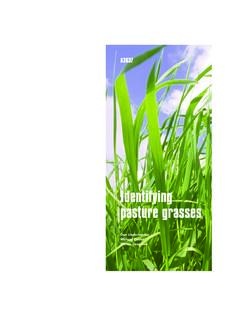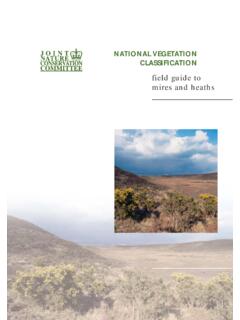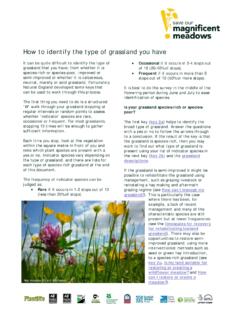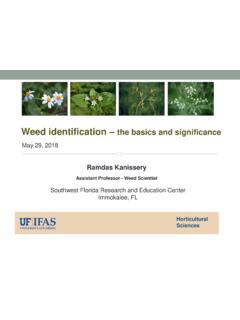Sedges
Found 8 free book(s)Identifying pasture grasses
pss.uvm.edusedges and rushes. To distinguish them, look for the following characteristics: Sedges have triangular stems that are filled with pith. The nodes are inconspicuous and leaves grow from the stem in three directions when viewed from top. Rushes have round or flat stems. Stems are commonly leafy only at the base. Leaves grow from two directions when
GUIDELINE FOR 1 HA OF SUGAR BEANS - Agricura
www.agricura.co.zwAnnual grasses & Alachlor 240mls Pre-emergent, for grasses, B/L weeds, supression for nut sedges 3 some B/L weeds Command 4 EC 120mls 1.5lt Metolachlor 80 - 120mls Pre-emergent. Apply immediately after planting 1.3 - 1.9 lt Broadleaf weeds Basagran 225mls Post emergent to broad leaved weeds. Use higher rates for controll of sedges 2.5 - 4 lt
National Vegetation Classification - field guide to mires ...
data.jncc.gov.ukSedges may be present but are subordinate to bryophytes or to other vascular species. 4. Vegetation dominated by Eriophorum angustifolium and/or E. vaginatum. 4a. Vege- tation domi- nated by other sedges or tall rushes. 6. Semi- aquatic rills and flushes dominated by Potamogeton polygonifolius and/or Montia fontana.
American Elk - USDA
www.nrcs.usda.govalong with sedges and early forbs. As summer progresses, more forbs and woody browse, such as shrub twigs and branches are consumed. Dry grasses and browse are consumed heavily in autumn. Elk prefer grass, but regularly feed on serviceberry, willow, buds of …
COMMON WETLAND PLANTS
files.nc.govThe following categories are used: 1) trees; 2) shrubs; 3) herbs; 4) grasses, sedges and rushes; 5) vines; and 6) aquatic herbs. Preceding each category is a list of common names, scientific names and wetland indicator status. Because plants have different tolerances for hydric conditions, a wetland
How to identify the type of grassland you have
www.magnificentmeadows.org.ukand sedges (more than 30%), excluding white clover, creeping buttercup and injurious weeds. 3? A wide range of grass species may be present, inc. blue moor-grass, crested hair-grass, heath-grass, meadow oat-grass, sheep’s fescue, tor-grass, upright brome, quaking -grass in addition to more commonly
Answer Key 1. B 41. C 81. C
www.kimberliejane.comA)sedges B)algae C)ants D)centipedes 23.Which population would be most immediately affected by the removal of the lizard population? 24.Base your answer to the following question on the diagram below and on your knowledge of biology. The diagram represents part of a food web.
Weed identification the basics and significance
swfrec.ifas.ufl.eduWeed identification – the basics and significance Ramdas Kanissery Assistant Professor - Weed Scientist May 29, 2018 Southwest Florida Research and Education Center Immokalee, FL







